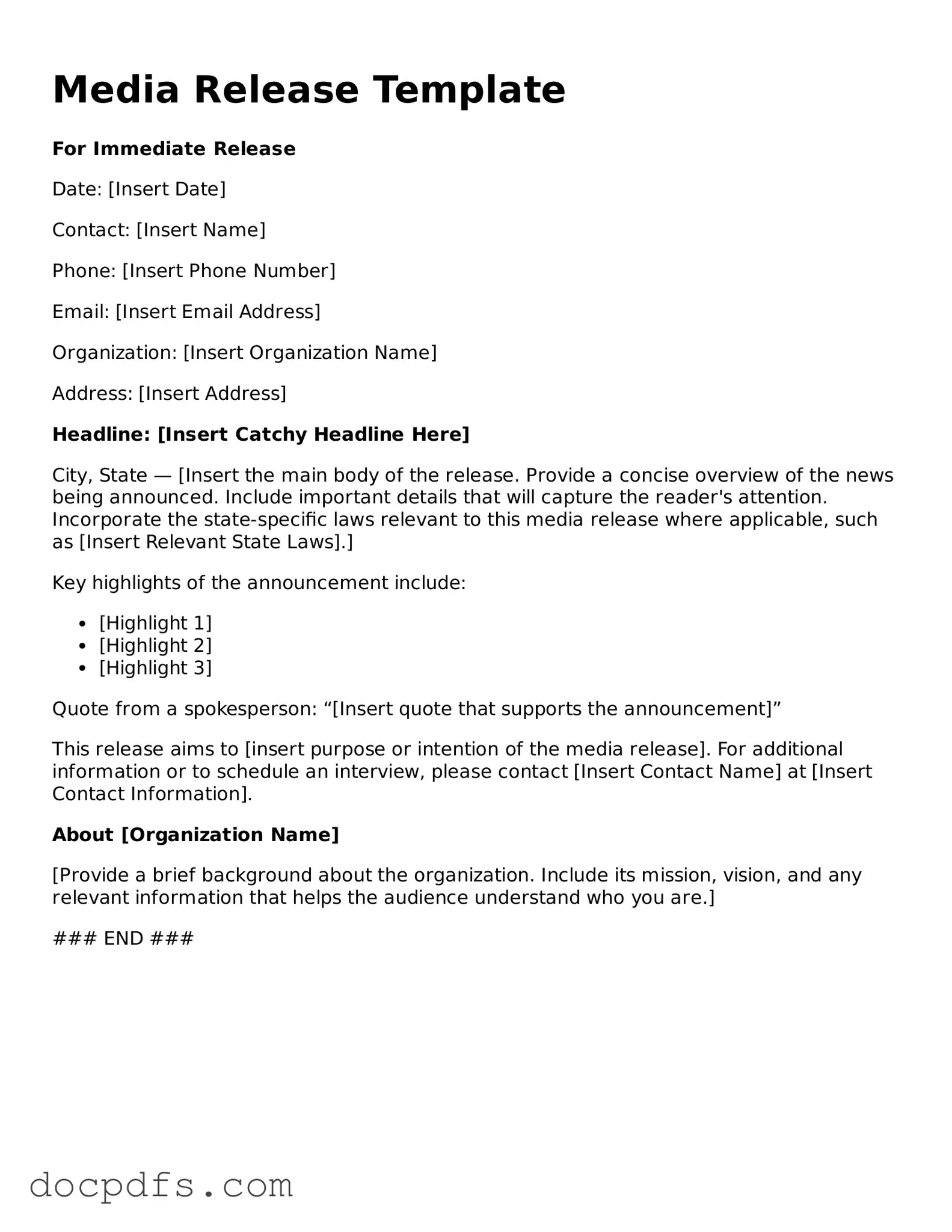Legal Media Release Document
A Media Release form is a document that grants permission for an individual or organization to use a person's image, voice, or likeness in various media formats. This form is essential for protecting the rights of all parties involved, ensuring that consent is clear and documented. Understanding how to properly use this form can help prevent misunderstandings and legal issues in the future.
Open Media Release Editor Now
